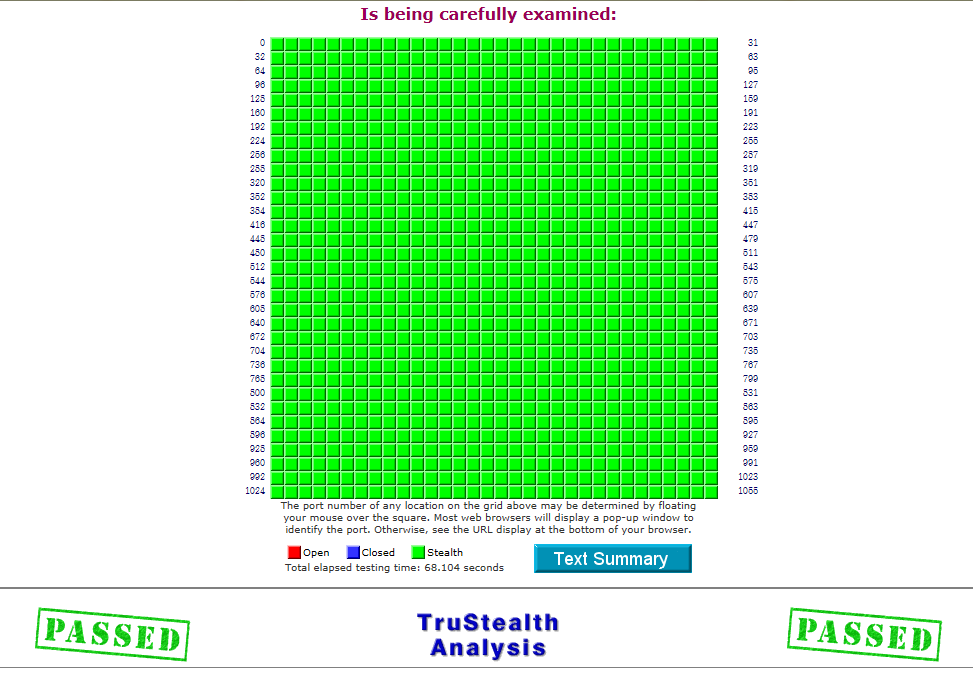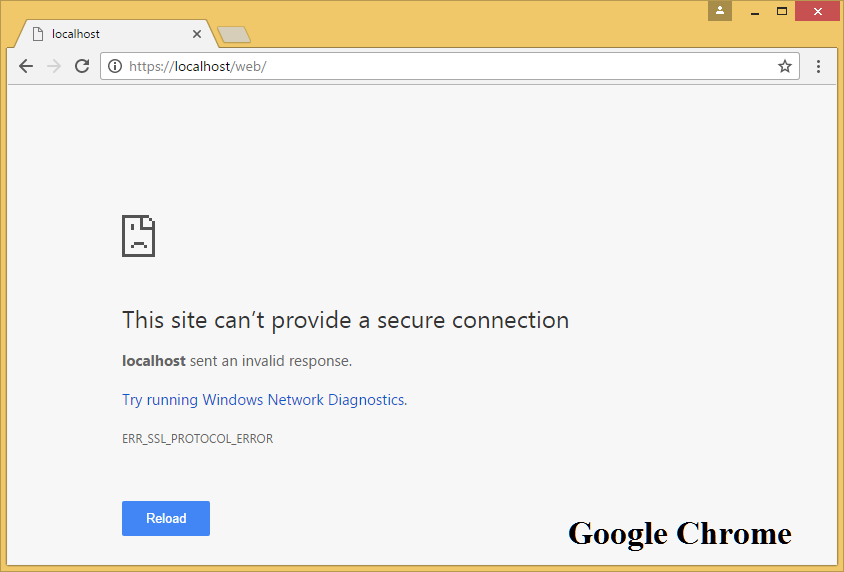The principal motivations for HTTPS are authentication of the accessed website, and protection of the privacy and integrity of the exchanged data while in transit. It protects against man-in-the-middle attacks, and the bidirectional encryption of communications between a client and server protects the communications against eavesdropping and tampering. The authentication aspect of HTTPS requires a trusted third party to sign server-side digital certificates.
In 2016, a campaign by the Electronic Frontier Foundation with the support of web browser developers led to the protocol becoming more prevalent. When we use a TLS certificate, the communication channel between the browser and the server gets encrypted to protect all sensitive data exchanges. All such secure transfers are done using port 443, the standard port for HTTPS traffic. However, HTTPS port 443 also supports sites to be available over HTTP connections.
Data transferred across such connections are highly resistant to eavesdropping and interception. Moreover, the identity of the remotely connected server can be verified with significant confidence. Web servers offering to accept and establish secure connections listen on this port for connections from web browsers desiring strong communication security.
Once established, web browsers inform their users of these secured connections by displaying an icon — a padlock, an unbroken key, etc. — in the status region of their window. This insecure connection warning message can be removed by installing an SSL certificate on the web server that hosts the site you 're trying to access. Between the client browser and the server, an SSL/TLS certificate establishes an encrypted, secure communication channel. This indicates that the connection will be created over HTTPS using port 443, the next time you visit the site. The server and the client communicate with each other over a secure connection.
Two different keys, i.e., the public key and the private key, are used in the encryption-decryption process. The public key is available to all users who want to communicate with the server. It encrypts the data, and only the private key with the web owner can decrypt the same. Installing an SSL certificate on the web server that hosts the site you're trying to access will eliminate this insecure connection warning message. An SSL/TLS certificate lays down an encrypted, secure communication channel between the client browser and the server.
This means that the next time you visit the site, the connection will be established over HTTPS using port 443. Secure Sockets Layer is the technology responsible for data authentication and encryption for internet connections. It encrypts data being sent over the internet between two systems so that it remains private. Because data can be sent with or without the use of SSL, one way to indicate a secure connection is by the port number. To avoid making any assumptions about what HTTPS can and cannot protect, it's important to note that the security benefits don't travel down the layers. When your browser makes an HTTPS connection, a TCP request is sent via port 443.
However, once the connection is established, although the application layer data is encrypted, that doesn't protect users against fingerprinting attacks. When a website uses an SSL/TLS certificate, a lock appears next to the URL in the address bar that indicates it's secure. However, this secure lock can often be misleading because while the communication channel is encrypted, there's no guarantee that an attacker doesn't control the site you're connecting to. Besides, several other security vulnerabilities could lead to a data compromise, and only using SSL/TLS certificates can't protect your server or computer against them. For example, your computer can still download malware due to drive-by download attacks, or the data you enter on a site can be extracted due to an injection attack against the website. HTTPS has been shown to be vulnerable to a range of traffic analysis attacks.
Can Port 443 Be Hacked Traffic analysis attacks are a type of side-channel attack that relies on variations in the timing and size of traffic in order to infer properties about the encrypted traffic itself. Traffic analysis is possible because SSL/TLS encryption changes the contents of traffic, but has minimal impact on the size and timing of traffic. In May 2010, a research paper by researchers from Microsoft Research and Indiana University discovered that detailed sensitive user data can be inferred from side channels such as packet sizes. Although this work demonstrated the vulnerability of HTTPS to traffic analysis, the approach presented by the authors required manual analysis and focused specifically on web applications protected by HTTPS.
To prepare a web server to accept HTTPS connections, the administrator must create a public key certificate for the web server. This certificate must be signed by a trusted certificate authority for the web browser to accept it without warning. The authority certifies that the certificate holder is the operator of the web server that presents it. Web browsers are generally distributed with a list of signing certificates of major certificate authorities so that they can verify certificates signed by them. This means that it can't be read by an attacker on the network. This happens because the original data is passed through an encryption algorithm that generates a ciphertext, which is then sent to the server.
The original SSL protocol was created by Netscape in the year 1995 and it was made public as 'SSL 2.0'. Since then, updates have been made in order to ensure a powerful and secure connection. In the year 1999, 'TLS 1.0' was released which was an update to 'SSL 3.0'. Since that time, TLS is the primary encryption technology that is used for securing data that is transmitted over the internet connections and SSL. However, as the term 'SSL' is more popular, widely known and recognized, the technology is known as SSL.
The default port for https is 443, but you can however run SSL over a different port than 443 by simply adding a binding for https and a different port. What you have to keep in mind is that by not using a standard port you may have problems with the client's firewall . For example it is common practice that in corporate networks only a small set of ports is open (e.g., 80 and 443), and client connections to non-standard ports will be rejected.
HTTPS, which provides a secure link between the client and the server, is used to do this. It sends encrypted web traffic across the internet using network port 443. In the past, this meant that it was not feasible to use name-based virtual hosting with HTTPS.
A solution called Server Name Indication exists, which sends the hostname to the server before encrypting the connection, although many old browsers do not support this extension. Support for SNI is available since Firefox 2, Opera 8, Apple Safari 2.1, Google Chrome 6, and Internet Explorer 7 on Windows Vista. It is necessary to configure a SSL certificate form a range of SSL Certificates on our server to get a message "connection is secure" in the URL address bar. This is the permission of secure connection between a client and server. If you are a web user or a web owner, you must be aware of the encryption securities provided by SSL certificates. SSL Certificates are those digital certificates that secure client-server communications with encryption.
To know if a site is secured with SSL encryption security, the user must look out for its trust symbols. Additionally, the default ports an application uses can sometimes depend on whether the application is encrypted or cleartext. Port-based policy requires you to open all the default ports an application might use to account for encryption. Open ports introduce security gaps that an attacker can leverage to bypass your security policy. However, application-default differentiates between encrypted and clear-text application traffic.
This means that it can enforce the default port for an application, regardless of whether it is encrypted or not. If your website is not secured with an SSL certificate, even though your website users might want to buy from your website, they might not do so. After all they will be providing important information like their personal details and credit card/debit card details and no one wants this crucial information to get compromised.
Therefore, if your website is denoted as a not-secure one, people will consider purchasing the same things from some other website. Another important reason to be considered is that the major web browsers like Google Chrome indicate whether a website is secure or not in the address bar. A non-secure or a secure website is indicated with a padlock icon or with the word 'secure'. And the organization, the web server requires a server certificate. A certificate is a digital file that contains information about the identity of the web server. It also contains the encryption technique to use when establishing a secure channel between the web server and the portal.
A certificate must be created by the owner of the website and digitally signed. There are three types of certificates—CA-signed, domain, and self-signed—which are explained below. To create this secure internet connection, an SSL certificate is installed on a web server.
The SSL certificateauthenticates an organization's identity to activate the HTTPS protocol so that data can be passed securely from a web server to a web browser. This means that an attacker on the network will be unable to read it. This occurs because the original data is encrypted and delivered to the server as ciphertext. The Port 443, a web browsing port, is primarily used for HTTPS services.
It is another type of HTTP that provides encryption and transport over secure ports. SSL operates through the exchange of client and server credentials known as "security certificates". Security certificates are issued by trusted third parties, the largest of these being Verisign.
When we use an SSL/TLS certificate, a secured communication channel between the client and the server is established. This channel encrypts all sensitive data and protects it from cyber-attacks. HTTP (Hyper-Text Transfer Protocol) and HTTPS (Hyper-Text Transfer Protocol Secure) are two different protocols, and hence they use other ports. A port is a virtual numbered address that's used as a communication endpoint by transport layer protocols like UDP or TCP . Network ports direct traffic to the right places — i.e., they help the devices involved identify which service is being requested. 4123 should not be listening to connections from other computers, and you don't need to configure it in network firewall policies.
But if you have firewall software on the manager's server itself, verify that it does not block this connection to itself. Also verify that other applications do not use the same port . M calls for "all publicly accessible Federal websites and web services" to only provide service through a secure connection , and to use HTTP Strict Transport Security to ensure this. If your website is served through HTTPS, an additional level of security is added to it that protects your website against cyber crime and digital eavesdropping. Digital eavesdropping is a process where criminals monitor the network activity in order to get access to crucial information like user login credentials, personal user details etc.
Therefore, if your website is served through HTTPS, your connection is encrypted and this helps in safeguarding your website from criminal activity to a great extent. In order to establish a secure internet connection, it is important to install an SSL certificate on the web server. The SSL certificate validates the organization's identity for activating the HTTPS protocol. As a result of this, data is safely passed between the web server and the web browser.
SSL is a technology that performs data authentication and encryption for the data transmitted through the internet connection. This technology encrypts the data that is transmitted between two systems over internet in order to ensure that the information remains private and safe. This is the time where cyber crimes have increased and if you are using SSL to protect the information on your website, it is important for you to know everything about HTTPS. You will receive warnings about the site being untrusted when you access the portal from a web browser or desktop client.
When a web browser encounters a self-signed certificate, it typically displays a warning and ask you to confirm that you want to proceed to the site. Many browsers display warning icons or a red color in the address bar as long as you use the self-signed certificate. Expect to see these type of warnings if you configure the portal with a self-signed certificate.
There is no unexpected behavior or warning message displayed in the web browser, because the website has been verified by the certificate authority. The HTTPS protocol is a standard security technology used to establish an encrypted link between a web server and a web client. HTTPS facilitates secure network communication by identifying and authenticating the server as well as ensuring the privacy and integrity of all transmitted data. The TCP / IP(Transmission Control Protocol / Internet Protocol) model 's transport layer creates these ports, which are identified by numbers that correspond to different network processes.
These virtual network ports are used for various services; for example, port 21 is used for FTP , and port 53 is used for DNS , and so on. Their numbers designate the ports that are used to direct various sorts of online traffic through a website. As more people use mobile devices with browsers that don 't support HTTPS port 443 connections by default, we need to be more vigilant than ever about protecting our data while accessing the web. This article will teach you everything you need to know about HTTPS port 443.
The system can also be used for client authentication in order to limit access to a web server to authorized users. To do this, the site administrator typically creates a certificate for each user, which the user loads into their browser. A major difference between HTTP and HTTPS is that HTTPS runs on SSL.
Ports not only ensure network connections make it to the right place, they also make sure traffic doesn't get mixed up. You can control which ones are open and accessible, on either your computer or a server on the Internet. By blocking access to unused ports, either with a firewall or some other mechanism, you can minimize ways an attacker could access your computer. If you need to pinpoint the exact location where port 443 is blocked, type "tracert --d" .
Replace the server address given for the destination server address and press "Enter." Your workstation will begin tracing the network path to the destination. Each "hop" represents an intermediate router or server the trace must travel through en route. You may check each of these "hop" locations by typing "telnet" , followed by the first hop's IP address.
Execute the command by pressing "Enter." The first address that gives you a "connect failed" error message represents the culprit device. Federally issued certificates may be practical for web services whose users can be consistently expected to trust the issuing federal certificate authority . Users whose devices do not trust the issuing CA will experience a connection failure and be unable to use the web service. M requires secure connections for websites and web services, which means only HTTP-based protocols.






























No comments:
Post a Comment
Note: Only a member of this blog may post a comment.